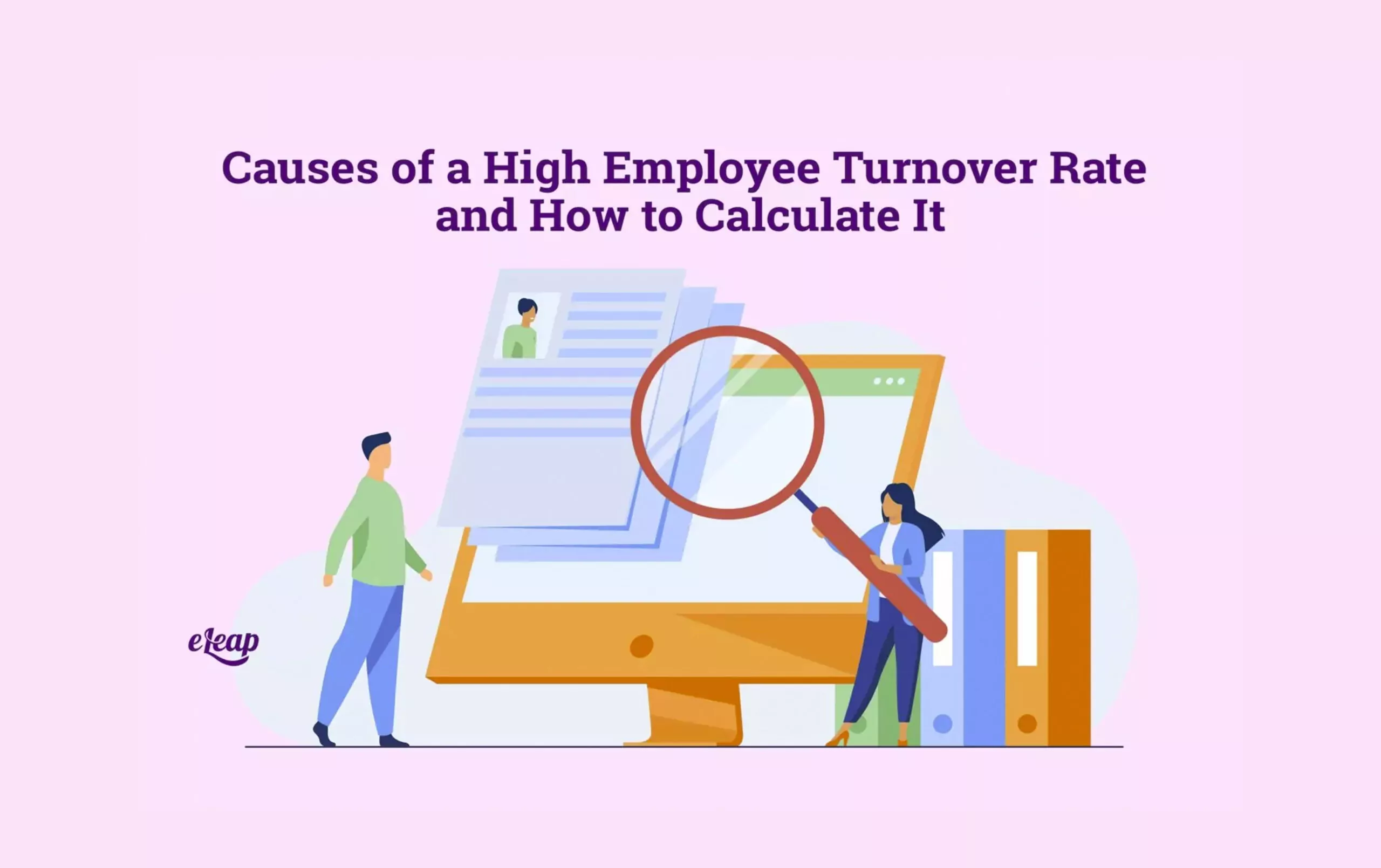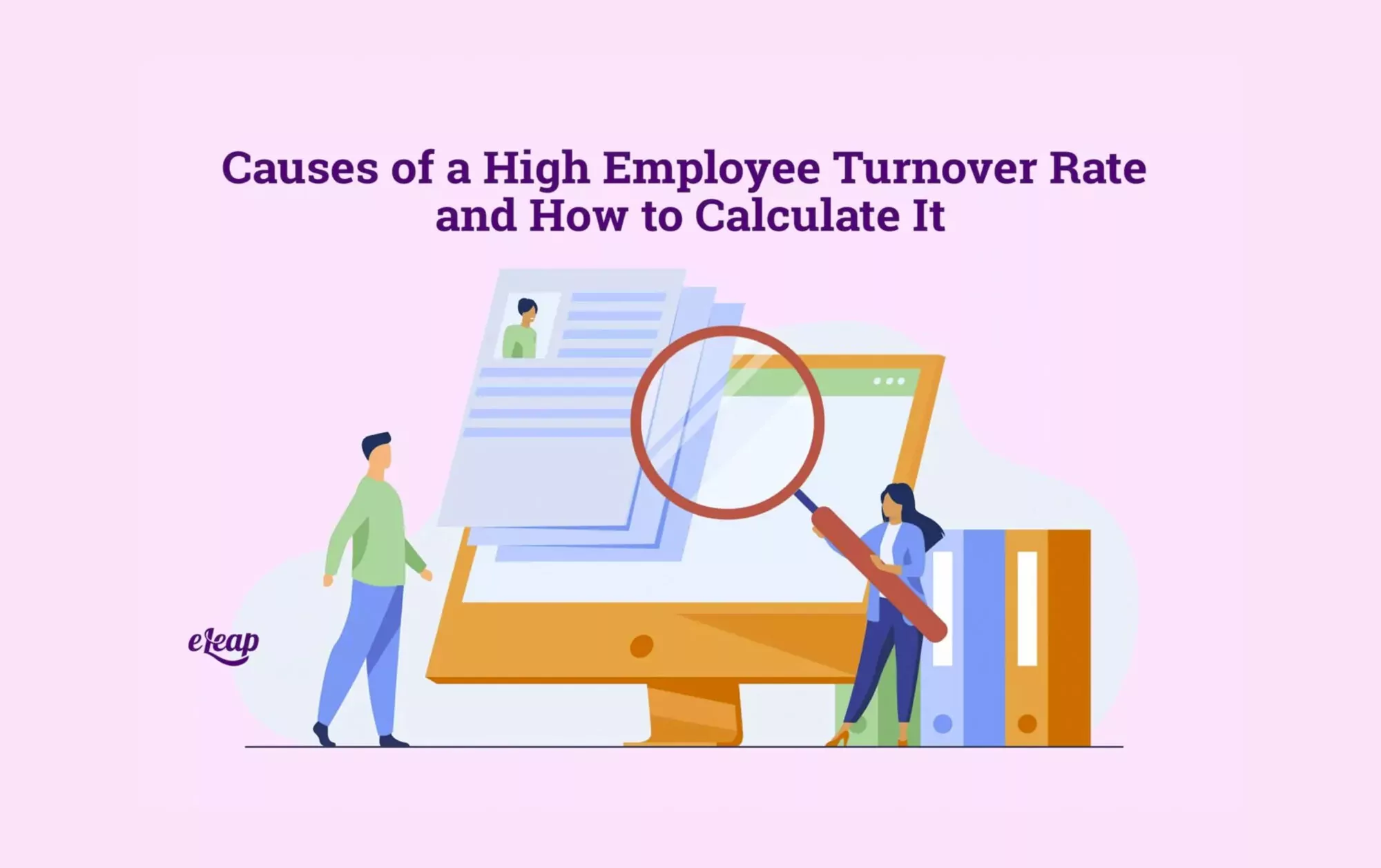Causes of a High Employee Turnover Rate and How to Calculate It

Now more than ever, it’s extremely difficult to find good employees willing to work, and many businesses are trying to remedy a high turnover rate. The parameters of the pandemic, coupled with the economic conditions of the last couple of years in the United States, have had a huge impact across all industries, and employee retention did not remain untouched. The year 2021 saw such a massive increase in employees voluntarily quitting their jobs that the surge has been dubbed “The Great Resignation,” as over 47 million Americans left the workforce of their own volition. Meanwhile, businesses everywhere are struggling to find enough staff to maintain normal operating hours and production demands.

It’s one thing to get good employees in the door, but it’s not the end of the story. The culture of developed countries requires that people use a form of currency to function in modern society. In other words, everyone has to earn money, and most people have to do so by working for someone else. However, the fact that “everyone must work” does not equate to employees putting up with great dissatisfaction in the workplace. Even people who love their jobs can still probably think of a hundred places they’d rather be than at work. Therefore, it’s important for employees to feel as though it is worthwhile for them to spend time at their job. When they don’t, it contributes to the turnover rate.
What is Employee Turnover?
Employee turnover is the rate at which employees leave a company within a given time frame and is often measured against the rate at which they are replaced. Businesses need to be aware of their turnover rate because when it increases, it could allude to issues within the employee operations within the company. Some amount of turnover is normal, but higher turnover rates can be concerning and costly to the business.
How Turnover Rate Contributes to Increased Company Expenses
Turnover can directly impact the productivity of an organization, especially when employees are leaving positions that must be replaced for the business to function normally. Lots of time, effort, and money go into running job ads for the vacancies, recruiting from both ad responses and cold calling resumes on the open market, interviewing candidates, and hiring those that are the best fit. Training these new employees can be both time-consuming and costly for a business. If the business has a human resources department, the HR staff becomes focused on replacing lost employees and integrating new hires as opposed to maintaining relationships and monitoring the satisfaction of the employees they still have, who may end up feeling neglected. If the business is small enough to not have a dedicated human resources department, this means that employees who are normally responsible for other things can be pulled away from their regular duties to recruit and train new hires, which also inhibits overall productivity for the business.
The trainees are also typically paid for their time spent in orientations and simply integrating into the workplace, during which they aren’t exactly contributing to company productivity. All in all, the time and monetary costs of replacing employees are compounding.
What Causes a High Turnover Rate?
Numerous factors can contribute to a high turnover rate and many different reasons that employees end up leaving. They could be leaving for voluntary or involuntary reasons. Involuntary reasons are typically when employees are terminated or laid off, as these are oftentimes not under the employees’ control. Voluntary reasons could be positive or negative.
One example of a positive voluntary reason for an employee to quit would be retirement. This is a normal part of life for many people in the workforce, and with many baby boomers retiring (a notable 28.6 million retirees in the third quarter of 2020), it’s contributing to the turnover rate more than it normally would.
Another example of a positive voluntary separation would be an employee who is simply changing career paths altogether. This might not necessarily be positive for the business, but at least the employer could have peace of mind in knowing the employee didn’t leave due to marked dissatisfaction at work and simply had a personal change of heart that called them into a different career.
Other positive reasons for an employee to leave a position of their own volition would include choosing to start a family or moving with their spouse, who might be experiencing a job change that merits relocation. These are normal life changes that people go through occasionally and have nothing to do with discrepancies in their job satisfaction.
Negative reasons for voluntary separation, on the other hand, are almost always related to workplace dissatisfaction in some form. These are the types of issues leadership teams have the power to address and rectify to have better employee retention and decrease the turnover rate. Employee dissatisfaction is one commonly cited reason for an employee to quit and can also be an umbrella term that covers the many factors that could contribute to that dissatisfaction.
Why do employees become unhappy at work? It could be because of a poor relationship and/or poor communication with their supervisors. These are often conflicts that are difficult to resolve unless effort is put in by both parties to heal any discrepancies.
A lack of employee appreciation and recognition can also contribute to an employee’s unhappiness at work. Even if they are doing their job well, never receiving positive feedback on their performance can seed anxiety and a progressive decrease in their confidence in their role. These issues give an employee a lower burnout threshold, and they will feel dissatisfied quicker than if they were receiving consistently positive feedback for their efforts. If they don’t feel like valued members of the team and they feel as though their hard work often goes unnoticed or unappreciated, they can quickly put themselves into the “overworked and underpaid” category.
This brings us to another contributor to employee dissatisfaction and that is inadequate pay or benefits. Again, employees need to feel like it is worth their while to spend time at work and trade their time for money. If their current salary or benefits package doesn’t add up to the time and effort they are putting into their work, they may seek greener pastures elsewhere and become another statistic contributing to the turnover rate.
How to Calculate Turnover Rate
The equation to calculate the turnover rate for an organization is relatively simple, and two main equations could be used. The first method involves considering a designated time frame, which could be monthly, quarterly, yearly, or even longer, depending on the business and what scope of time in which they’re evaluating the turnover rate. Take the number of employees lost during that time frame and divide it by the number of employees the business had at the start of it, then multiply that result by a factor of 100 to get a percentage turnover rate.
For example, if a management team is evaluating turnover over the course of a quarter, during which 25 employees either quit or were fired, and the company started the quarter with 100 employees, that would amount to a quarterly turnover rate of 25%. In other words, 25% of the company’s employees were lost during the quarter. However, this calculation doesn’t account for any employee losses that were eventually replaced.
If the same company ended that quarter with 125 employees, even after the 25 employees who separated from the company, this means that 50 new hires were made during the quarter. So, what is the turnover rate?
To calculate the turnover rate, including new hires, we must determine the average number of employees for the time frame. To do this, we add the number of employees at the beginning of the quarter, 100, to the number of employees at the end of the quarter, 125, which equals 225, and divide this by two to get an average employee count of 112.5 employees for the quarter. Now, we take the number of losses, 25 employees, divide it by the average of 112.5, and multiply the result by 100 to get the turnover rate of 22%.
The second method of calculating the turnover rate provides a more accurate number because it considers the fact that many of the separated employees were replaced. When most companies define turnover as the number of employees that leave versus the number of employees that are hired in a given time frame, the replacements cannot be left out of the calculation.
Conclusion – Keeping the Turnover Rate Low
There are as many ways to prevent employee dissatisfaction as there are reasons for employees to become discontent at work. Many of those methods rely on the capacity of managers to not only lead their teams but also serve them. Implementing employee feedback surveys and mutual performance interviews, using that feedback to drive positive change, cultivating positive work relationships between supervisors and lower employees, and ensuring employees are given appreciation and recognition for their accomplishments are all great methods to increase employee retention and reduce the turnover rate within an organization. Keeping the turnover rate as low as possible will equate to happier, more productive employees and a more successful business.